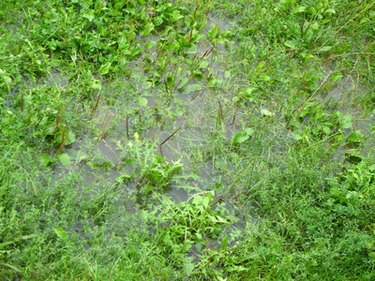
Surface water, from rain or melting snow filtering through the soil surrounding a home, can seep through the foundation material. This can cause water to build up in a basement or crawl space. Left alone, water build up can cause mold and compromise the structural integrity of the home. Sump pumps are installed in the lowest level of a basement or crawl space to pump this water out of and away from the home.
How a Sump Pump Works
Video of the Day
A sump pump ejects water through a pipe that runs from the pump to the outside of the home. The pump is installed in a pit dug at the lowest level of the basement or crawl space. The pit is lined using a precut fiberglass tube with several small slits or holes drilled into the sides that allow water to enter the pit. When water fills the pit, a pressure sensor activates the pump, and the water is forced through the pipe and out of the home.
Video of the Day
Sand Ejecting from the Pump
Homes with a high concentration of sand in the ground soil may experience sand ejection through the sump pump. This is caused by faulty lining in the sump pit. Either the pit is not lined at all, or the lining has cracked and weathered to the point that the sand contained in the soil surrounding the pit is seeping in with the water.
Damage Caused by Sand Ejection
The greatest risk of damage occurs when the sand accumulates at the bottom of the pit. If the sand is allowed to block the drainage tube, the water will have nowhere to go but up. This will cause the basement or crawl space to become flooded with water. When this occurs, the pressure sensor is continually activated and causes the pump to overwork and eventually burn out.
Fixing the Pit
The sump pump will need to be removed from the pit; and the pit cleared of all sand and any debris that may have leaked in. If the pit has an existing lining, it will need to be removed and replaced. If the pit is not lined, new fiberglass lining will need to be installed. Depending on the size of the new lining, the pit will either need to be widened or backfilled using a medium grade, course gravel. The pump is then reinstalled and the pit filled with water to flush the ejection pipe of any remaining sand.